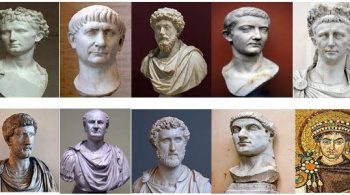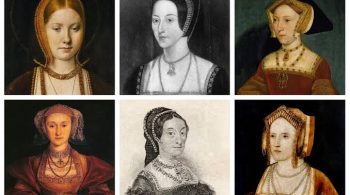Art is a broad area of human activity that comprises technical proficiency, beauty, emotional strength, and mental conceptions expressed through creative or imaginative talent. Painting is an ancient medium. However, we are now introduced to photography, film, and digital technology. But art still has remained a persistent mode of expression. A picture is worth a thousand words. Art is often meant to be “read” through critical analysis similar to texts. Paintings can be far more complicated than they appear at first glance. They are difficult to decipher if the viewer doesn’t speak the same tongue.
Now, some paintings have grabbed the attention of art lovers for years. It is not just because of their beauty, but also because they contain unresolved mysteries and hidden secrets. Critics rejected many notions concerning the true meaning or possible interpretations as mere attention-grabbing speculations. There are many paintings in the history of art considered ‘iconic’. In this article, we will try to rank some of these paintings. With that, we will also try to find out the meanings behind them.
Famous Paintings of Leonardo Da Vinci
Mona Lisa (1503)
Talking about the most famous paintings, the first one that is widely regarded is the Mona Lisa by Leonardo Da Vinci. It is a half-length portrait. Mona Lisa is an archetypal masterpiece of the Italian Renaissance. Moreover, it is “the best known, the most visited, the most written about, the most sung about, the most parodied work of art in the world”. Some researchers assume that Leonardo painted an ideal person rather than a real person. However, the majority hold other theories. The Mona Lisa is in the Louvre Museum in Paris since the end of the 18th century. It was stolen in 1911 and returned in 1913, which fuelled its popularity.
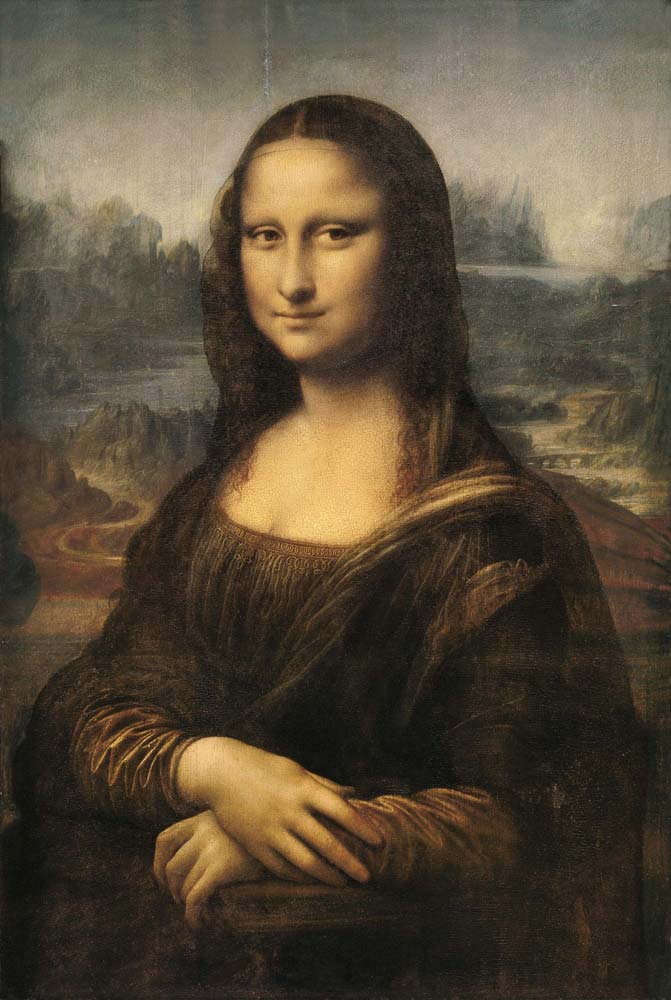
It is now one of the most famous exhibits in the world. Painted between 1503 and 1517, Da Vinci’s alluring portrait has been dogged by two questions since the day it was made. These are who’s the subject and why is she smiling? Critics have proffered a number of theories about the former over the years. Firstly, she’s the wife of the Florentine merchant Francesco di Bartolomeo del Giocondo. Secondly, she’s Leonardo’s mother, Caterina, conjured from Leonardo’s boyhood memories of her. Finally, it’s a self-portrait in drag. As for the mysterious famous smile, it has driven people crazy for centuries. Whatever the reason, Mona Lisa’s serene expression matches the idealized countryside behind her. It then fades into the distance thanks to Leonardo’s atmospheric perspective.
The Last Supper (1495-1498)
The Last Supper is among the most famous paintings in art history. It is a mural painting by Leonardo da Vinci, drawn between 1495–to 1498. The artwork depicts the scenario from the Gospel of John’s account of Jesus’ Last Supper with the Twelve Apostles. It is the moment after Jesus announces that one of his apostles would betray him.

The Last Supper (1495–98) by Leonardo da Vinci is one of the most famous paintings in the world. The scene’s composition is brilliant in its massive simplicity. The mindsets of the 12 disciples in comparison to Christ can be seen clearly. When Jesus declares, “One of you will betray me,” surrounded by the Apostles as they share Passover. Leonardo here depicted a high-tension scenario. All of the Apostles are concerned because they do not grasp what is going to happen, whereas Christ, aware of his holy purpose, sits alone in transfigured peace. Only one other being has access to the hidden knowledge: Judas, who is both a part of and separate from his friends’ movement. In this isolation, he becomes the second lonely figure—the guilty one—of the company.
Famous Paintings of Vincent Van Gogh
Café Terrace at Night (1888)
This blue-and-yellow canvas, completed in September 1888, represents a picture of a street in Arles. It is located between the Place du Forum and the rue de Palais. People huddle on the outdoor patio of a local café at an unknown late hour as passers-by pass by. The Café Terrace at Night was one of Van Gogh’s Post-Impressionist works. Many unappreciated the work during his lifetime. However, it is now one of the artist’s most important works and one of the world’s most famous paintings.

‘Café Terrace at Night’ is one of Van Gogh’s most famous paintings. When most people look at it, they see an average, unimpressive setting in the artwork. However, it is created with the artist’s signature magic touch. Despite this, many people believe the painting depicts the Last Supper. The Last Supper is the last dinner that Jesus shared with his twelve disciples. Therefore, Van Gogh’s picture definitely depicts 12 individuals sitting down to dine, with a long-haired central figure standing among them.
The Starry Night (1889)
The Starry Night is an oil-on-canvas painting by the Dutch Post-Impressionist painter Vincent van Gogh. Painted in June 1889, it depicts the view from the east-facing window of his asylum room at Saint-Rémy-de-Provence, just before sunrise, with the addition of an imaginary village.

This mid-scale, oil-on-canvas painting is dominated by a moon- and the star-filled night sky. It takes up three-quarters of the picture plane and appears turbulent, even agitated, with intensely swirling patterns that seem to roll across its surface like waves. It is packed with bright orbs—including the crescent moon to the far right, and Venus, the morning star, to the left of the center—surrounded by concentric circles of radiant white and yellow light.
Self-Portrait (1889)
Vincent van Gogh, a Dutch Post-Impressionist painter, painted a self-portrait in oil on canvas in September 1889. Van Gogh created many famous paintings throughout his life. He painted the picture just before leaving Saint-Rémy-de-Provence in southern France. It is also possible that it was his last self-portrait. The picture is now on display at the Musée d’Orsay in Paris.
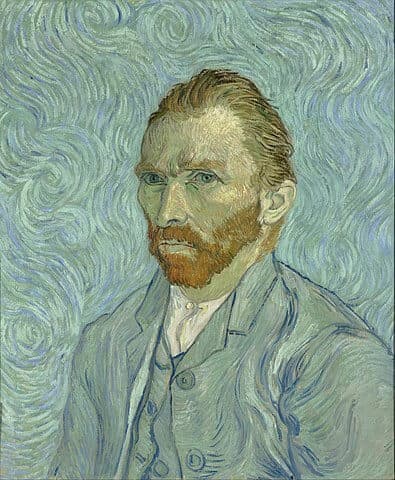
Vincent painted approximately 35 self-portraits. However, only one portrait photo has survived. It depicts him as a 19-year-old with a slightly grumpy expression. The many self-portraits he created reveal most of the information we know about his appearance. There are at least 35 of them. Therefore, based on them we portray him with red hair, green eyes, and an angular face. Those paintings of the faces, however, are all unique.
Famous Paintings of Michelangelo
The Sistine Chapel Ceiling (1508-1512)
Renaissance gifted us with many famous paintings. Among other most famous paintings after Da Vinci’s Monalisa stands the Sistine Chapel Ceiling by Michelangelo. Michelangelo painted the Sistine Chapel ceiling between 1508 and 1512. It is a cornerstone work of High Renaissance art.

The Creation of Adam (1512)
The Creation of Adam is a fresco painting by Italian artist Michelangelo, which forms part of the Sistine Chapel’s ceiling, painted c. 1508–1512. It illustrates the Biblical creation narrative from the Book of Genesis in which God gives life to Adam, the first man.

It portrays one of the artist’s nine of the scenes from the book of Genesis (“1, 27: God created mankind in his own image”). The painting is one of the most popular and well-known works of art in the world. It has been replicated widely and subjected to tributes and parodies.
Famous Paintings of Pablo Picasso
Les Demoiselles d’Avignon (1907)
Les Demoiselles d’Avignon is a large oil painting created in 1907 by the Spanish artist Pablo Picasso. The work is part of the permanent collection of the Museum of Modern Art. It portrays five nude female prostitutes in a brothel on a street in Barcelona, Spain.

The ur-canvas of 20th-century art, Les Demoiselles d’Avignon, guided in the modern era as it dramatically broke the Western painting’s representational heritage. It added allusions to African masks Picasso had seen in Paris’s ethnographic museum at the Palais du Trocadero. Its compositional DNA also contains El Greco’s The Vision of Saint John (1608–14), which is currently on display in the Metropolitan Museum of Art.
Guernica (1937)
The artwork is a large 1937 oil painting on canvas by Spanish artist Pablo Picasso. It is probably Picasso’s one of the most famous paintings. It’s also his most forceful political statement. He painted the artwork in response to the Nazis’ casual bombing of the Basque hamlet of Guernica during the Spanish Civil War.

Guernica depicts the horrors of war and the pain it causes humans, especially innocent civilians. Therefore, this art has achieved legendary status, serving as a constant reminder of war tragedies. Historians consider it an anti-war emblem, and a symbol of peace.
Famous Paintings in the World
The Birth of Venus by Sandro Botticelli (1485-1486)
The Birth of Venus is one of the most famous paintings by the Italian artist, Sandro Botticelli. The painting was executed in the mid-1480s. It shows the goddess Venus arriving at the shore after her birth when she had emerged from the sea fully grown. The painting is in the Uffizi Gallery in Florence, Italy.

The “Birth of Venus” depicts the goddess of love and beauty coming on land. It is on the island of Cyprus, having been born of sea spray and driven there by the winds Zephyr and, maybe, Aura. Therefore, the goddess is perched atop a massive scallop shell, as pure and flawless as a pearl. A young woman greets her holding out a flower-covered cloak. Critics frequently refer as one of the Graces or the Hora of Spring. Even the blown-in blooms serve her as a reminder of spring. Botticelli takes his inspiration from classical statues for Venus’ modest pose. We can see this as she covers her nakedness with long, blond hair, which has reflections of light from the fact that it has been gilded. The Winds, the pair flying in one another’s embrace, is also based on an ancient work.
Girl with a Pearl Earring by Johannes Vermeer (1665)
Girl with a Pearl Earring is an oil painting by Dutch Golden Age painter Johannes Vermeer. The estimated time period for the artwork’s creation is between 1665 and 1667. However, It is one of the most famous paintings by Vermeer. However, it has been the subject of various literary works, including poems, novels, and films. Along with countless reproductions and variations on the theme. Going by various names over the centuries, it became known by its present title towards the end of the 20th century. the naming was done after the earring worn by the girl portrayed there. Therefore, we consider the ‘Girl with a Pearl Earring’ as one of Vermeer’s most famous paintings.

Nicknamed the “Mona Lisa of the North,” it’s beginning to rival Leonardo Da Vinci’s Mona Lisa masterpiece in terms of exposure. There are certain qualities that make Girl with a Pearl Earring so seductive. For one thing, it is a work of beauty. The striking blue and yellow of the girl’s headscarf is set against a black background. The glistening pearl is created in a few swift strokes. The expert capturing of light and shade on her luminous skin, and the liquid pools of her eyes, therefore, all add up to a work of sublime beauty.
A Sunday Afternoon on the Island of La Grande Jatte by Georges Seurat (1884-1886)
A Sunday Afternoon on the Island of La Grande Jatte was painted from 1884 to 1886. It is Georges Seurat’s one of the most famous paintings. The famous painting is a major example of pointillism and is widely regarded as one of the most important works of the 19th century. People enjoying a summer day on the island of La Grande Jatte. The place is located on the Seine River in Paris. He depicted the whole view using the pointillism technique.

However, the artist approached the difficulties of color, light, and form with great scientific accuracy. He contrasted tiny dabs of hues that form a single and more spectacularly dazzling hue. He covered the canvas with a painted dashes and dots frame. After that, he then surrounded it with a pure white wood frame. It is to make the experience of the painting even more intense. Therefore, the very immobility of the figures and the shadows they cast make them forever silent and enigmatic. Like all great masterpieces, La Grande Jatte continues to fascinate and elude.
The Scream by Edvard Munch (1893)
The Scream by Edvard Munch is one of the most famous paintings in the world. In 1893 Norwegian artist Edvard Munich painted the masterpiece. The painting’s pained face has become one of the most iconic images of art, seen as symbolizing the anxiety of the human condition. There are various variations of The Scream. Munch composed a text describing the subject before illustrating it. Edvard Munch produced four colorful versions of The Scream. He drew two paintings with tempera, and two drawings with pastel and crayon. The first painted version was the first exhibited, debuting in 1893.
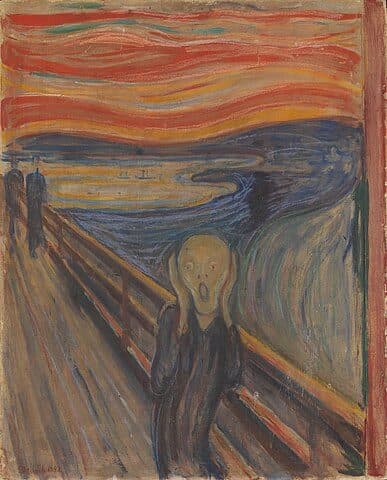
This is the version that has the barely visible pencil inscription “Kan kun være malet af en gal Mand!” which means only a madman could have painted this. He also produced a pastel version in the same year. However, the second pastel version is from 1895. The second painted version dates from 1910, during a period when Munch revisited some of his prior compositions.
Impression, Sunrise by Claude Monet (1872)
Impression, Sunrise is one of the most famous paintings by Claude Monet. It was originally presented in April 1874 at the “Exhibition of the Impressionists” in Paris. In 1872 Monet returned to his hometown of Le Havre and painted 6 works showing the old out-port of Le Havre. Each of them portrayed the scenery of the port at different periods. ‘Impression, Sunrise is the most famous of them. Therefore, the painting is what gave the Impressionist movement its name. The sunrise in the harbor of Le Havre, Monet’s hometown, is depicted in Impression.

Monet shows a mist, providing a hazy backdrop to the picture situated on a French bay. The orange and yellow colors contrast well with the dark vessels which reveal little if any detail to the spectator. The smaller boats in the front are seemingly driven along by the movement of the water in this striking and candid work. Separate brushstrokes helped to achieve the various colors “sparkling” on the sea. Only a few brushstrokes suggest the dockyards in the background, as well as the boats in the foreground. However, the whole is a quick attempt by the artist to depict a brief moment. The extremely apparent, near-abstract method draws almost as much attention as the subject matter itself. It was a concept viewer were unfamiliar with at that time.
The Kiss by Gustav Klimt (1907-1908)
The Kiss is an oil painting with added gold leaf, silver and platinum by the Austrian Symbolist painter Gustav Klimt. He painted it at some point in 1907 and 1908. It unquestionably marks the culmination of his “Golden Epoch” period. During this decade, the artist developed a puzzling, ornamental encoded concept focused on the mystery of existence, love, and fulfilment through art. Klimt gained initial inspiration for this in 1903 on a journey to Ravenna. In addition, the painting contains motifs from various cultural epochs, above all from Ancient Egyptian mythology.
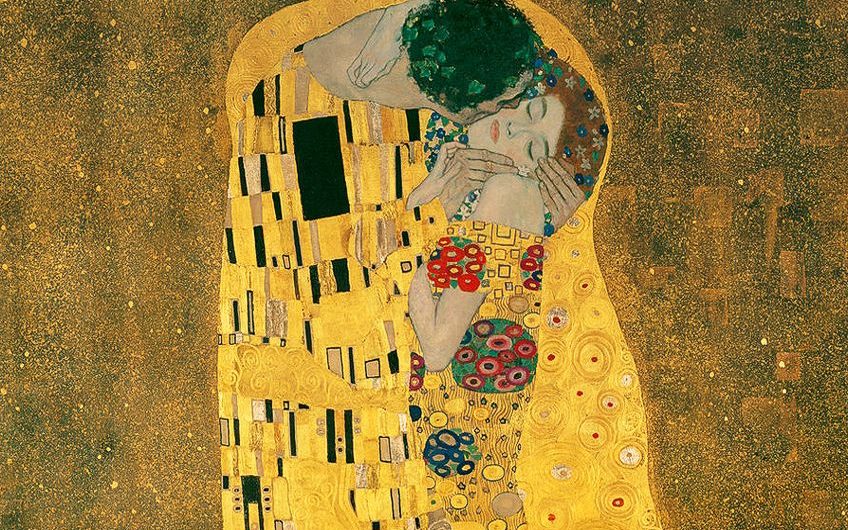
The Kiss depicts a couple wrapped in a loving embrace in typical Art Nouveau style. Not only is this painting the most loved and celebrated of Klimt’s paintings, but it is also one of the most controversial. In this composition, the hugging pair takes centre stage. They have a dark and flat golden background framing them on either side. We can glimpse the border of a flowery field beneath the woman’s bare feet at the couple’s feet. The figure is wearing a flowing yellow dress with organic floral designs and circular forms. The florals continue into her hair, while the man wears an ivy crown. Over the man’s shoulders has a drape of a similar robe with slight swirls and geometric motifs.
Read Also: What are the seven deadly sins ?
We cannot see the face of the man as he is bent over. He is cradling the woman’s face between his hands and kissing her on the cheek. The woman has her eyes softly closed. Her face turned up towards the kiss and her one arm draping around his neck. Some historians have argued that this composition may capture the kiss between Apollo and Daphne in the Greek myth, Metamorphoses. However, others argue the woman may be Emilie Floge, Klimt’s close friend and companion.
The Persistence of Memory by Salvador Dali (1931)
The Persistence of Memory is a 1931 painting by artist Salvador Dalí and one of the most famous paintings in works of Surrealism. First shown at the Julien Levy Gallery in 1932. Since 1934 the painting has been in the collection of the Museum of Modern Art in New York City, which received it from an anonymous donor. The Persistence of Memory by Salvador Dali is one of the most famous paintings in works of surrealism. The painter says in his autobiography “The Secret Life of Salvador Dali” that while suffering from a sudden headache, the soft camembert (cheese) on the table. Therefore, Dali created the melting clocks using his paranoid-critical surrealism approach. The softness of the camembert inspired to do the work.

The famous painting attracts visitors from all over the world to the Museum of Modern Art. It is a work that represents an entire movement. The Surrealist vision brings an unsettling landscape to life with accuracy. This “fury of precision” is exactly what makes ‘The Persistence of Memory’ so surreal. Instead of rendering a fantastical world in hasty brushstrokes and arbitrary colors, Dalí painted familiar objects in unfamiliar ways.
F.A. Qs
1.What is the no.1 famous painting?
Ans. The Mona Lisa by Leonardo Da Vinci is the most famous painting in the world. The famous painting has delighted onlookers ever since it was painted in the early 1500s.
2. What are the top 5 famous paintings?
Ans. The Mona Lisa, The last Supper, The Scream, The girl with Pearl Earring, Guernica
3. Who is world No 1 painter?
Ans. Leonardo da Vinci is widely recognized as the most famous artist of all time. He’s the genius behind the iconic Mona Lisa painting masterpiece.

